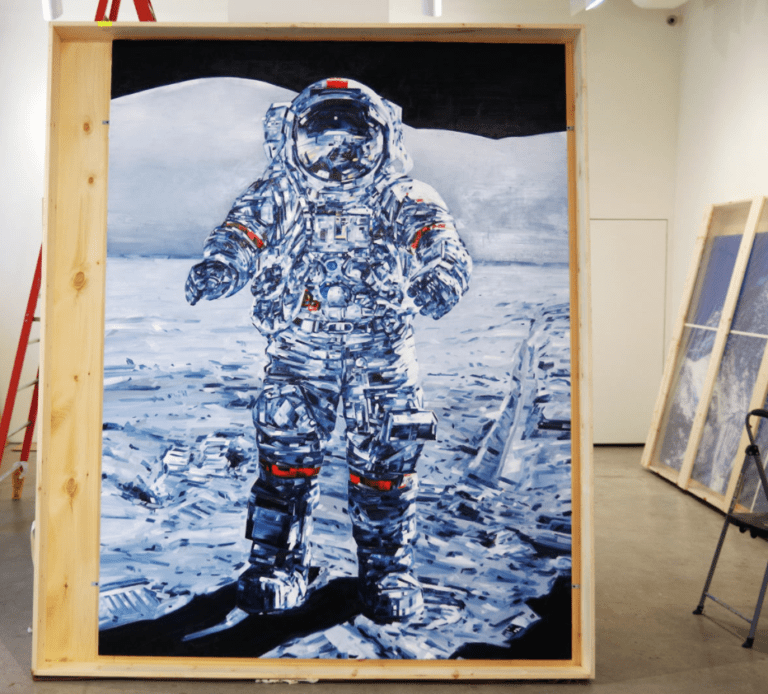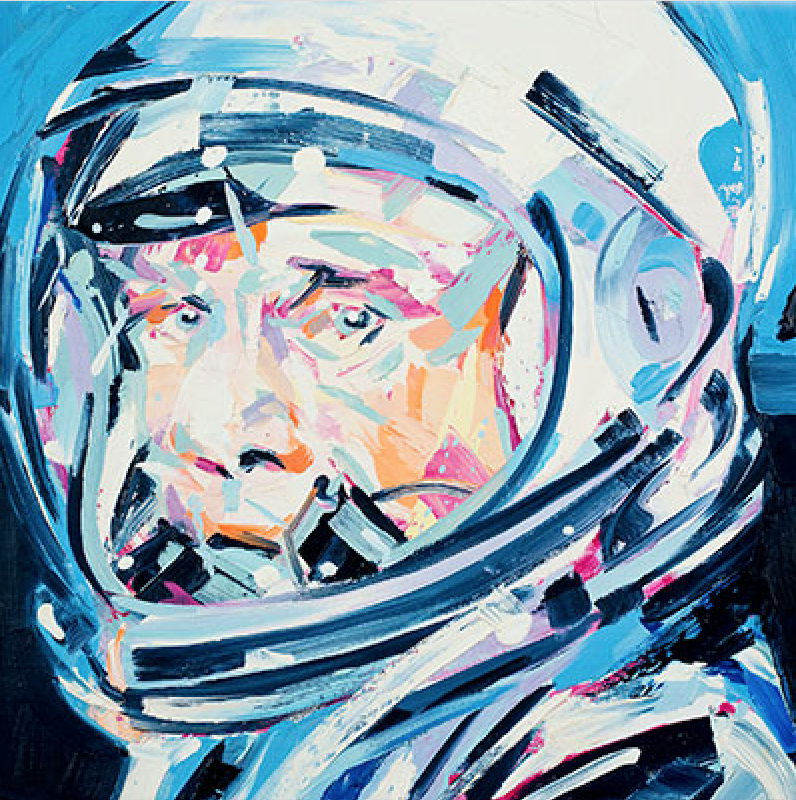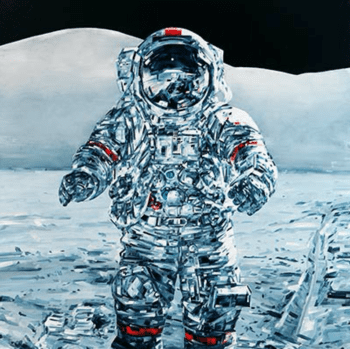Written by Isabelle Davis
Art of Choice had the opportunity to speak with Michael Kagan, a NY-based artist. During our time with him, Kagan explained his education, artistic process, and drive behind his work. Kagan has pursued art embodying different facets of contemporary and abstract art. Kagan’s work aims to be central and evokes a sense of naturalism; it attracts viewer’s within an instant.

What is your artistic background?
I moved to New York in 2003 to attend graduate school: the New York Academy of Art. I knew that after I graduated the key would be to have a studio and paint as much as possible. I was lucky to have been awarded a third-year fellowship… I was given a studio and a solo show in one of the school’s main exhibition spaces at the end of the following year. That year was key, I learned the rhythm of my studio practice and the flow of making finished paintings. Through that experience, I decided to fully pursue art because of my experience every day in the studio. Also, the network of artists such as Fischl and Jenny Saville, who I met through grad school showed me all the different paths one could pursue as a professorial painter.
When did you first realize you wanted to be an artist?
I grew up in Virginia, taking art classes in high school. When I attended George Washington University for undergrad, I progressed my artistic studies through drawing and painting classes; however, I didn’t really know what to do with the skills I gained. It was very academic training and was almost setting up artists to go the academic teaching route. I always wanted to be an artist and knew that I had zero desire to teach, it wasn’t until I came to NYC that I quickly saw the direction I wanted to go.
 How would you describe your work and your painting process?
How would you describe your work and your painting process?
There’s one analogy that I really think applies to my work: If you are in a crowded room, looking at my work will feel like an instant boom a quick snapshot. My work is a quick read, and that’s what I like so much about it. I’ve mostly focused on iconic images: astronauts, mountains like Everest and K2, racecars, etc. I keep my subject matter central and filling up the canvas, very little is there any background info… I want to stay far away from narrative painting. My painting process is built up of a lot of paint; high contrast colors and marks using squeegees and scrapers. My brush strokes are also very deliberate, I never double back or scrape off paint; I want to leave everything on the canvas… every brush mark is a moment and I want to keep those as fresh as possible… I want the confident strokes to feel confident… the tense strokes to look tense and all the while never being able to duplicate the same mark twice.
 Astronauts are such a big part of your paintings; do you think they will always be the subject of your work?
Astronauts are such a big part of your paintings; do you think they will always be the subject of your work?
I really want to be an abstract painter, but I do not want to force it and for now, I lean more to the side of representational painting. Right after graduate school, I helped Richard Prince and Gagosian Gallery with a show they were working on in St. Barths. While I was there, I ended up taking photos of people on the beach. After taking all those photographs, I did a ton of beach scene paintings, which were very successful in 2005. They were the first big paintings I sold, but I did not feel a real connection with the work at the time. When I got back from St. Barths, I had these iconic astronaut ideas, which gelled perfectly with the way I paint. I don’t think they’ll always be the main focus of my work I want to work all the ideas out of my head and then move on. I have a few ideas of what the next subject matter will be, but I always feel it is important not to force anything and let it happen organically.
What are the first three words that come to mind when asked to describe work?
Big, painterly, and paintings
What are the first three words that come to mind when asked to describe yourself?
Big, painterly, and painter
How would you describe the word “art”? What does it mean to you?
 There are so many different pockets and avenues of the art world. I like art because I like how I can create these images that are unique and not able to be recreated. Creating these images that I’m leaving on the canvas and leaving them behind. If I get hit by a bus tomorrow, there are paintings around the world that are left behind… that makes me feel good at night.
There are so many different pockets and avenues of the art world. I like art because I like how I can create these images that are unique and not able to be recreated. Creating these images that I’m leaving on the canvas and leaving them behind. If I get hit by a bus tomorrow, there are paintings around the world that are left behind… that makes me feel good at night.
Do you have any quotes from other artists that are important to you? 
It’s not a quote, but Gerhard Richter’s book of journal entries is titled Daily Practice of Painting. I really connect with the title. I feel like you’re only as good as the last time you painted, and, if you do it daily.. you are only getting better. I love the hardworking painters, they pump me up and make me want to be in my studio more. Erik Parker, Jules de Balincourt, Ali Banisadr… those guys are in front of a canvas working hard day in and day out… that motivates me.
What is one art movement that influenced your work?
I like the guys like Jonas Wood, Tuymans, Eberhard Havekost, and Wilhelm Sasnal. They are representational painters, but they are pushing it into their own direction and making it contemporary and fresh.
What is your take on New York as an artist living and working here?
 I wouldn’t want to be anywhere else…maybe LA. New York is just so central, it’s a location that if I need to travel to Europe or LA for work, I can.
I wouldn’t want to be anywhere else…maybe LA. New York is just so central, it’s a location that if I need to travel to Europe or LA for work, I can.
If you could have dinner with anyone in the world, dead or alive, who and why??
I’d want to have dinner with Gerhard Richter and Luc Tuymans at the same time.
What do you have planned next?
I’m doing a show with the Bill Brady Gallery at the end of February. The show will have about 13 to 14 of my paintings. Planning a show for LA and then I will have a museum show at VA MOCA in October of 2019.
Who are some artists you collect?
Eddie Martinez, Richard Prince, Tauba Auerbach and Katherine Bradford.